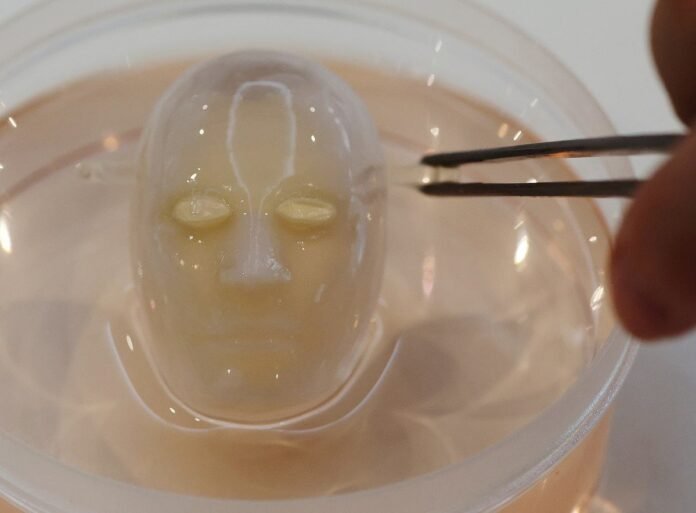A University of Tokyo researcher displays a facial shape covered with human skin tissue in his laboratory in Tokyo on July 12.
14:10 JST, August 1, 2024
TOKYO (Reuters) – Japanese scientists have devised a way to attach living skin tissue to robotic faces and make them “smile”, a breakthrough that holds promise for applications in cosmetics and medicine.
Researchers at the University of Tokyo grew human skin cells into the shape of a face and pulled them into a broad smile, using embedded ligament-like attachments.
The result, while creepy, is an important step toward building more lifelike robots, said lead researcher Shoji Takeuchi.

Shoji Takeuchi
“By attaching these actuators and anchors, it became possible for the first time to manipulate living skin,” he added.
The smiling robot, the focus of a study published online last month in Cell Reports Physical Science, is the result of a decade of research by Takeuchi and his lab into the best way to combine biological and artificial machines.
Living tissue has numerous advantages over metals and plastics, Takeuchi says, including the energy efficiency of brains and muscles and the ability of skin to repair itself.
Looking ahead, the researchers want to add more elements to the lab-grown skin, including a circulatory system and nerves. That could lead to safer testing platforms for cosmetics and drugs that are absorbed through the skin.
It could also provide more realistic and functional coverings for robots. Still, the challenge remains to rid people of the strange or unnerving feelings that come from machines that aren’t quite convincing.
“There’s still a bit of creepiness to it,” Takeuchi acknowledged of the robot. “I think making robots out of the same materials as humans and having them show the same facial expressions could be a key to overcoming the uncanny valley.”



